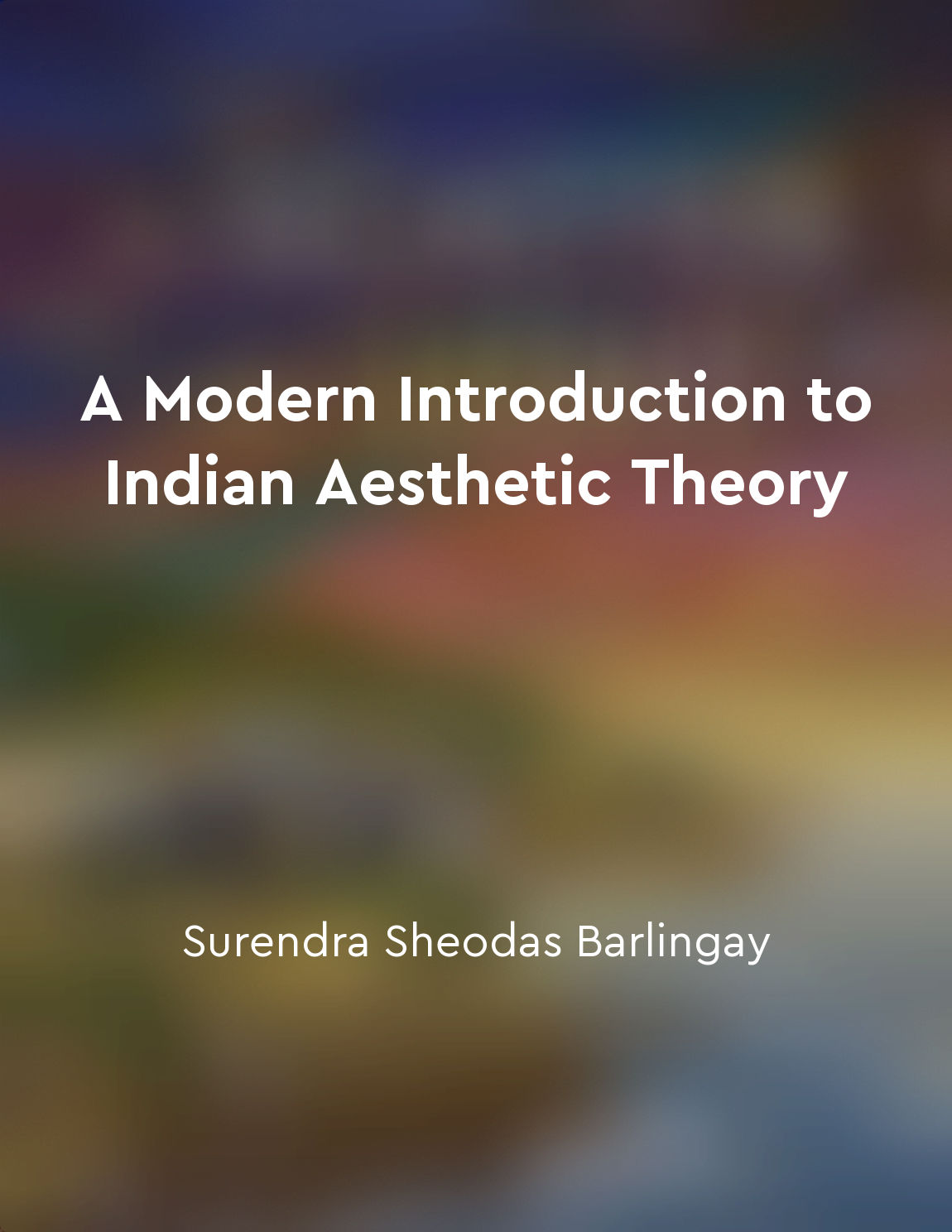The evolution of Indian Aesthetic Theory over time from "summary" of A Modern Introduction to Indian Aesthetic Theory by Surendra Sheodas Barlingay
Indian Aesthetic Theory has undergone significant evolution over time, reflecting the changing philosophical and cultural landscape of India. In ancient Indian texts such as the Vedas and Upanishads, aesthetic concepts were intertwined with religious beliefs and rituals, emphasizing the importance of beauty and harmony in spiritual practices. The concept of rasa, or aesthetic experience, was first articulated in the Natyashastra, a foundational text on Indian aesthetics attributed to the sage Bharata. The medieval period saw the development of various aesthetic theories in different regions of India, influenced by the rise of Bhakti and Sufi movements. Poets and scholars explored themes of love, devotion, and mysticism in their works, creating a rich tapestry of artistic expression. The Bhakti poets, such as Kabir and Mirabai, celebrated the beauty of divine love through poetry and music, while Sufi mystics like Rumi delved into the spiritual dimensions of aesthetic experience. During the Mughal and British colonial periods, Indian Aesthetic Theory underwent further transformations as it encountered new cultural influences. The Mughal emperors were patrons of the arts, commissioning exquisite paintings, sculptures, and architecture that reflected a fusion of Indian and Persian styles. The encounter with European aesthetics through colonialism led to a reevaluation of traditional Indian concepts, sparking debates on the nature of beauty, creativity, and artistic expression. In the modern era, Indian Aesthetic Theory has continued to evolve in response to globalization and urbanization. Contemporary artists and scholars are reinterpreting traditional concepts in light of contemporary issues such as identity, politics, and technology. The concept of rasa, for example, has been reexamined in the context of postcolonial theory, challenging traditional hierarchies of taste and subjectivity.- The evolution of Indian Aesthetic Theory over time reflects the dynamic nature of Indian culture and its engagement with diverse philosophical, religious, and artistic traditions. By tracing this evolution, we gain a deeper understanding of the complexity and richness of Indian aesthetics, and the ways in which they continue to shape artistic practices and cultural identities in the modern world.
Similar Posts
Gandhi's nonviolent resistance played a key role in the struggle for independence
Gandhi's strategy of nonviolent resistance, also known as satyagraha, was a significant factor in India's fight for independenc...

Rasa as a spiritual experience
The concept of Rasa as a spiritual experience is a central idea in Indian aesthetic theory. Rasa refers to the emotional flavou...
The Green Revolution transformed Indian agriculture
The agricultural landscape of India underwent a profound transformation with the advent of the Green Revolution. This revolutio...

Rasa as the essence of Indian art
Rasa occupies a central position in Indian aesthetic theory, serving as the essence of Indian art. It is a concept that has bee...

